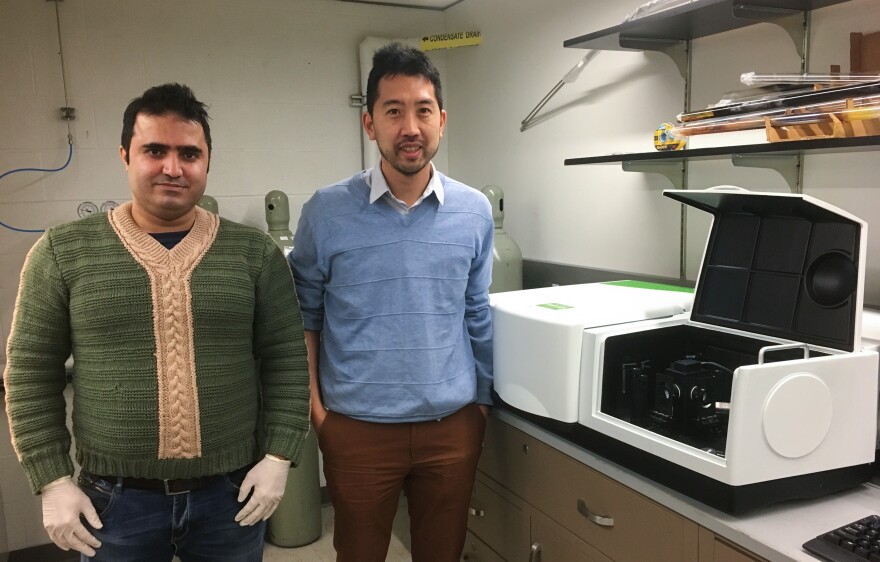Researchers at the University of Pittsburgh are working to improve the next generation of solar panels.
They’re using something called fused silica glass. Imagine tiny blades of grass, almost 1,000 times thinner than a human hair, tightly packed together.
That’s how the surface of fused silica glass will look under a microscope after Paul Leu, a professor of industrial engineering at the University of Pittsburgh, and Sajad Haghanifar, a Ph.D. student in Leu's lab, bombard the glass' surface with charged particles called ions.

Leu said this glass has two important properties, which could make it effective for use on the surface of solar panels.
"Not only anti-reflection, but also that you can make the glass 'hazy,'" said Leu.
Leu said anti-reflective properties are already standard in solar panels and that the less light is reflected off the surface of the panel, the more can go in.
The hazy, opaque quality means that when light passes through the glass, it will be scattered at many different angles, as opposed to entering head on. Leu said that this distribution should allow for better absorption in the inner layers of panels.
"More of the light is going to be converted to electricity, so you'll have a higher overall solar cell efficiency," said Leu, adding that's still to early to predict exactly how much more efficient the fused silica glass will be compared to existing technologies.
Leu said, in the future, he wants to make this new glass more resilient to elements like rain, dust and sand, to improve its durability for use on panel surfaces.





